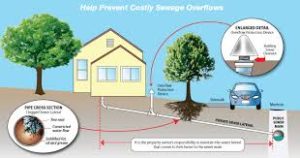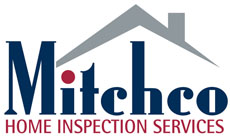A lateral line is the private sewer line, sometimes called a house tap or building sewer, that connects your home to the public sewer system. Waste water from your toilets, sinks, showers, washing machines travels through your lateral line to the public (or mainline) sewer system which carries it to the nearest waste water plant for treatment.
The line is inspected by pushing a snake cable with a high tech camera attached to the end of it from a stack inside or outside your home to the city’s main line. The inspector captures the action live on a monitor and records the entire process while the scope is taking place.
Lateral line blockages are most often caused by excessive buildups of grease (a result of pouring cooking grease and fat down the kitchen sink) and tree roots that have grown into the sewer pipe typically causing offsets, cracks and on rare occasions crushing the pipe all together.
In some cases the city may pick up the bill. Most cities will only entertain your claim when presented with a lateral sewer report and a video which you will receive from the inspector on the day of inspection.

A sewer inspection is specifically tailored to complement the home inspection process.
The equipment that makes this possible is a flexible rod connected to a high-resolution camera which transmits video from the sewer to a monitor above. The videos and pictures of the sewer line are then prepared in a report that will be emailed to you and your agent.
A sewer inspection is a very important influence in your decision to purchase a home and can easily be scheduled either through your home inspector or by contacting us direct. Clay and cast iron piping was used extensively up into the mid-1970s for sewer lines. From then on most piping was converted over to PVC. The older rigid clay and cast iron pipes have a greater risk of breaks, cracks, offsets and root intrusion at the joints.
